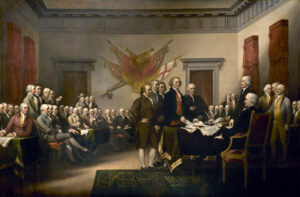GS1 – World History

Context
The United States of America marks its 249th Independence Day on July 4, 2025.
Historical Background and Events Leading to Independence
During the 1760s and 1770s, the thirteen American colonies increasingly opposed British control due to their lack of representation in the British Parliament and the imposition of several restrictive laws, such as:
- The Sugar Act (1764)
- The Tea Act (1773)
- The Intolerable Acts (1774)
These policies, combined with Enlightenment ideas promoting liberty and self-governance, fueled colonial resistance.
The Boston Tea Party
On December 16, 1773, protestors in Boston, angered by British economic policies, destroyed a consignment of British East India Company tea, igniting widespread defiance.
This protest was rooted in the principle of “No taxation without representation.”
In response, the colonies convened the Continental Congress, which:
- Boycotted British goods
- Sought to negotiate with King George III
- Eventually found themselves at war with Britain by April 1775, initiating the American Revolutionary War, which continued until 1783
Declaration of Independence
On July 2, 1776, twelve of the thirteen colonies voted in favor of independence.
Subsequently, on July 4, 1776, the Declaration of Independence was officially adopted, declaring the colonies as free and sovereign states, effectively severing ties with the British Crown.




